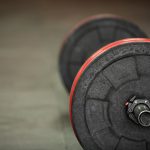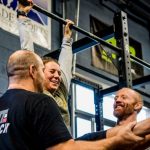Tighter is Lighter
#tighterislighter
We created that social media hashtag because it’s catchy, but it’s also a key concept in gymnastics movement. If your body is tighter, using the key principles of body tension we teach, it’s easier to move through space. This is true of virtually all gymnastics movements: handstand walking, ring muscleups, and so on. They all benefit from proper body tension.
Here’s an example we use in Seminars to drive the point home: Overhead squats. Let’s say you weigh 170 pounds and can overhead squat a 170-pound barbell for reps. Now, load up 170 pounds, but instead of using a regular barbell and plates, use a bamboo bar and attach kettlebells to the ends using bands. Same weight, exponentially more difficult.
Our bodies work the same way during gymnastics movement. It’s easy to get people to conceptualize unstable loads by using the above barbell example, but in gymnastics, your body is the load. Lack of body tension, limbs flopping around…all of it means that you have to expend more energy just trying to “stabilize the load” before you even start the full gymnastics skill. If you can create proper body tension and a tight body, you can move more efficiently.
We tell athletes that if they expend 10% more energy on making their body tighter, the skill they’re doing gets 40% easier. That’s a net win, in terms of energy use. And efficiency in movement is what we’re all about.
So what’s a good, practical way to create body tension and make yourself lighter?
Squeeze your heels together.
Stand up and press your heels together like you’re trying to crack a walnut between them. Feel how your entire posterior chain immediately gets tight? Bam; now you’re tighter and easier to move through space. Try it on bar kipping, ring swings, handstands, everything next time you’re in the gym. Even if you make no other changes to your gymnastics technique, you’ll immediately feel the difference. Once you’re in the habit of always squeezing your heels together on gymnastics skills, you can start branching out into more advanced technique changes and get better and better results.
If you struggle diagnosing whether your heels are remaining together (most athletes do), take some video of yourself doing your gymnastics skills and watch what your heels do. You can also take something like a painter’s sponge (these work great!) or rolled-up hand towel and try to hold it between your heels during your skills. This will give you good feedback about actually pressing your heels together to create tension.
Tighter is lighter!
CLICK HERE to start making your gymnastics 40% easier!



